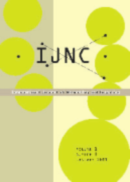4 巻, 2 号
選択された号の論文の13件中1~13を表示しています
- |<
- <
- 1
- >
- >|
Special Issue on the First International Symposium on Computing and Networking
-
2014 年 4 巻 2 号 p. 207-208
発行日: 2014/07/14
公開日: 2014/11/01
PDF形式でダウンロード (31K) -
2014 年 4 巻 2 号 p. 209-222
発行日: 2014/07/14
公開日: 2014/11/01
PDF形式でダウンロード (1282K) -
2014 年 4 巻 2 号 p. 223-235
発行日: 2014/07/14
公開日: 2014/11/01
PDF形式でダウンロード (93K) -
2014 年 4 巻 2 号 p. 236-250
発行日: 2014/07/14
公開日: 2014/11/01
PDF形式でダウンロード (719K) -
2014 年 4 巻 2 号 p. 251-259
発行日: 2014/07/14
公開日: 2014/11/01
PDF形式でダウンロード (98K) -
2014 年 4 巻 2 号 p. 260-278
発行日: 2014/07/14
公開日: 2014/11/01
PDF形式でダウンロード (278K) -
2014 年 4 巻 2 号 p. 279-290
発行日: 2014/07/14
公開日: 2014/11/01
PDF形式でダウンロード (169K) -
2014 年 4 巻 2 号 p. 291-306
発行日: 2014/07/14
公開日: 2014/11/01
PDF形式でダウンロード (435K) -
2014 年 4 巻 2 号 p. 307-320
発行日: 2014/07/14
公開日: 2014/11/01
PDF形式でダウンロード (2443K) -
2014 年 4 巻 2 号 p. 321-335
発行日: 2014/07/14
公開日: 2014/11/01
PDF形式でダウンロード (353K) -
2014 年 4 巻 2 号 p. 336-354
発行日: 2014/07/14
公開日: 2014/10/31
PDF形式でダウンロード (756K) -
2014 年 4 巻 2 号 p. 355-368
発行日: 2014/07/14
公開日: 2014/11/01
PDF形式でダウンロード (1377K) -
2014 年 4 巻 2 号 p. 369-391
発行日: 2014/07/14
公開日: 2014/11/01
PDF形式でダウンロード (12985K)
- |<
- <
- 1
- >
- >|
